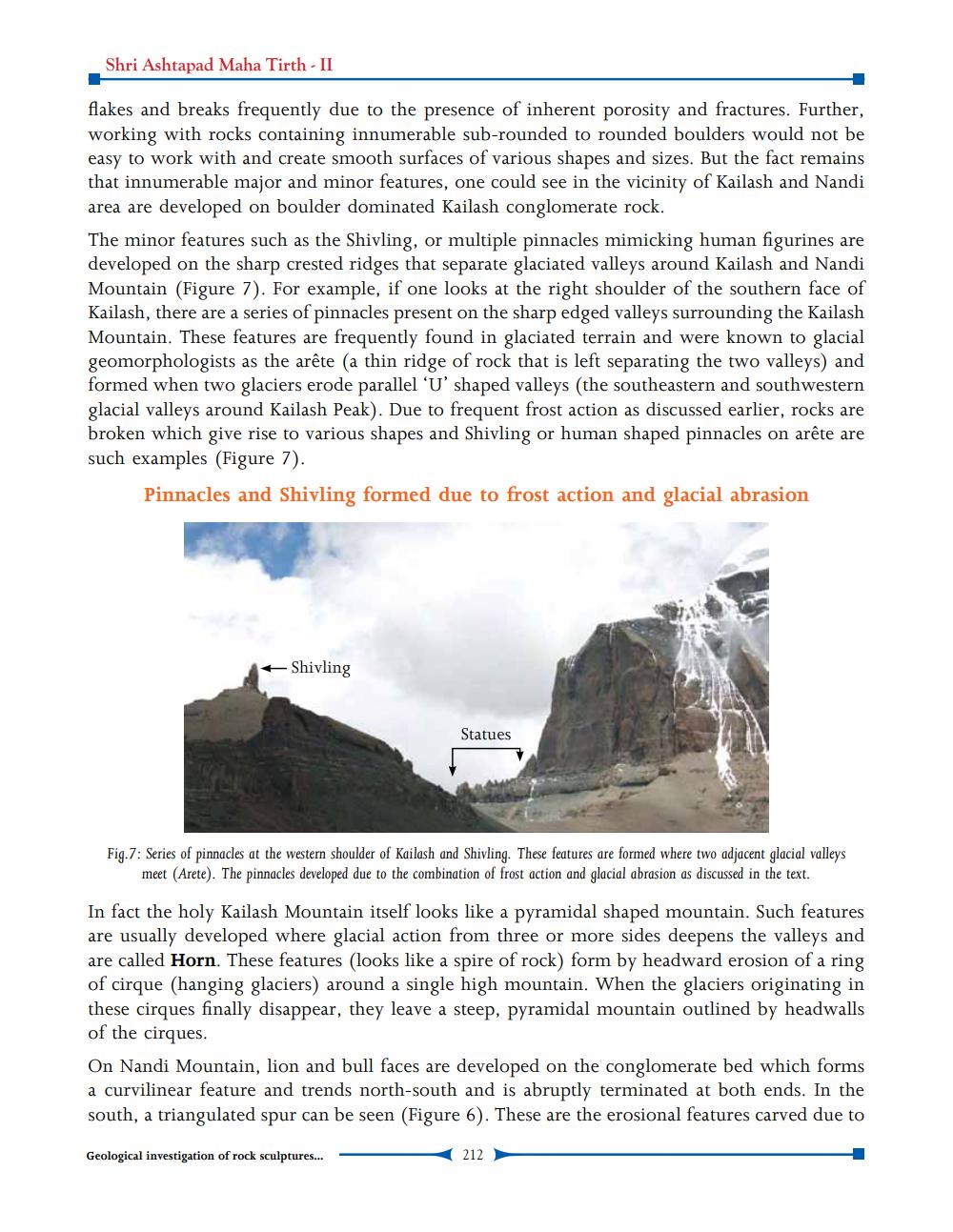________________
Shri Ashtapad Maha Tirth - II
flakes and breaks frequently due to the presence of inherent porosity and fractures. Further, working with rocks containing innumerable sub-rounded to rounded boulders would not be easy to work with and create smooth surfaces of various shapes and sizes. But the fact remains that innumerable major and minor features, one could see in the vicinity of Kailash and Nandi area are developed on boulder dominated Kailash conglomerate rock.
The minor features such as the Shivling, or multiple pinnacles mimicking human figurines are developed on the sharp crested ridges that separate glaciated valleys around Kailash and Nandi Mountain (Figure 7). For example, if one looks at the right shoulder of the southern face of Kailash, there are a series of pinnacles present on the sharp edged valleys surrounding the Kailash Mountain. These features are frequently found in glaciated terrain and were known to glacial geomorphologists as the arête (a thin ridge of rock that is left separating the two valleys) and formed when two glaciers erode parallel 'U' shaped valleys (the southeastern and southwestern glacial valleys around Kailash Peak). Due to frequent frost action as discussed earlier, rocks are broken which give rise to various shapes and Shivling or human shaped pinnacles on arête are such examples (Figure 7).
Pinnacles and Shivling formed due to frost action and glacial abrasion
Shivling
Statues
Fig.7: Series of pinnacles at the western shoulder of Kailash and Shivling. These features are formed where two adjacent glacial valleys meet (Arete). The pinnacles developed due to the combination of frost action and glacial abrasion as discussed in the text.
In fact the holy Kailash Mountain itself looks like a pyramidal shaped mountain. Such features are usually developed where glacial action from three or more sides deepens the valleys and are called Horn. These features (looks like a spire of rock) form by headward erosion of a ring of cirque (hanging glaciers) around a single high mountain. When the glaciers originating in these cirques finally disappear, they leave a steep, pyramidal mountain outlined by headwalls of the cirques.
On Nandi Mountain, lion and bull faces are developed on the conglomerate bed which forms a curvilinear feature and trends north-south and is abruptly terminated at both ends. In the south, a triangulated spur can be seen (Figure 6). These are the erosional features carved due to
Geological investigation of rock sculptures...
212




